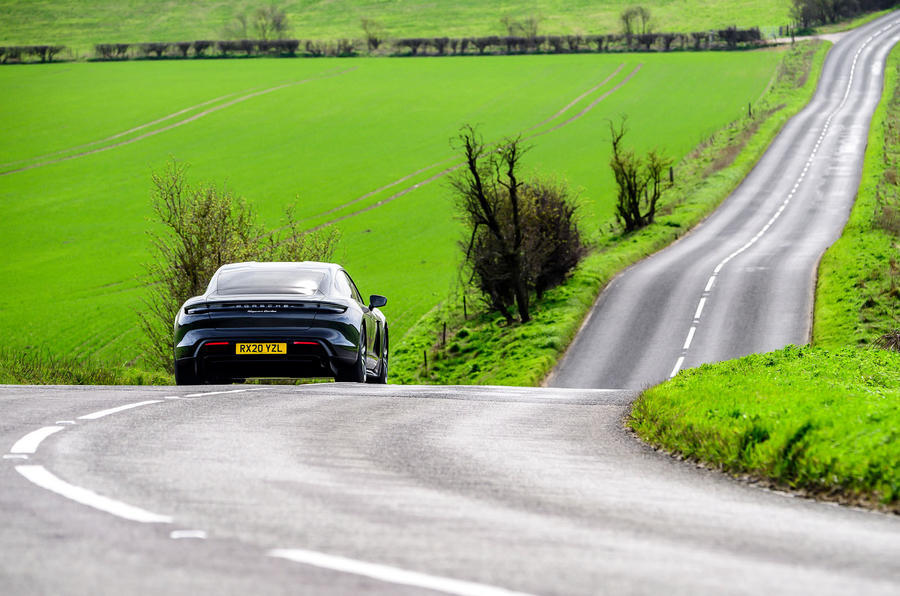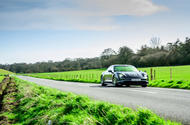Our first UK drive of Porsche’s EV raises the age-old question: how fast is too fast?
Before I get into this one, I just want to state for the record: I am not one of those motoring writers who only cares about cars with more than 400bhp. Most of my daily driving is done in a Mazda 3, and I reckon the Volkswagen Up and its siblings might be some of the best cars released in the past decade.
But nor am I anti-fast car, and every now and then, I get some seat time in something seriously rapid. Monday was one of those times, as I sneaked in Autocar’s last UK first drive a few hours before Boris Johnson announced the pandemic lockdown. The new Porsche Taycan Turbo. You can read my wider thoughts on it here.
Spoiler alert: it’s fantastic. The first truly dynamically capable mass-market EV. But it made me realise that electric cars are accelerating the ‘faster is better’ mantra that has plagued the car industry for at least two decades, and they’re doing so at an unprecedented rate.
The Taycan, like most EVs, weighs quite a lot. So it needs a fair few kilowatts to get it moving at an acceptable rate. And 500kW (that’s 671bhp) does the job pretty well, in my book. In fact, after half a day driving across some of the quickest, most well-sighted roads in the south-east, I’m convinced nobody needs or can make proper use of anything faster on any British road. Whether you wish to risk losing your licence or not.

The acceleration is so relentless and instant – particularly from a launch, but at any speed and in any situation – that it concerns me somebody with nothing more than a healthy bank account and a driving licence can get hold of one. Yet the Taycan is barely the tip of the iceberg. Think about Rimac’s work in taking EVs well beyond 1000bhp. And then think about the 1900bhp Pininfarina Battista. And then the 1973bhp Lotus Evija. Making an EV generate numbers that were beyond all logic only a few years ago seems too easy.
I’m aware I’m staggering down a well-trodden path here, but what possible use is 1973bhp in a two-seater in any road situation? One slip of the foot, one tiny misguided moment of showing off, and you’re either at three-figure speeds or ploughing into whatever was 100m away three seconds ago.
Such a prospect would even be daunting on some of the UK’s smaller circuits. And anyway, would you want to take your near £2 million hypercar to Brands Hatch only to stuff it on the third lap due to the mind-scrambling straight-line speeds outpacing your braking timing, or make it another handful of laps before the battery has less charge in it than your phone?
As has been the case for years, these cars exist primarily for bragging rights or for those who simply must have the ‘ultimate’ thing. They are at their best on a deserted airfield. Fine, they have a purpose, albeit a narrowly defined and niche one. But we’ve been banging this drum for as long as I can remember: speed and fun are often not directly linked. In fact, beyond a certain point the more of the former a car is capable of, the less chance there is of the latter being sustainable on the road.
Porsche, I think, gets this. The 911 is often at its most engaging in its slowest spec, and I suspect that, were it not for the existence of Tesla’s stomach-churning Performance models, the Turbo and Turbo S Taycans would not have been made the priority at the model’s launch.
More often than not, it’s when approaching a car’s limits (either by chucking it into a bend or spinning the engine as fast as it will allow) that it starts to really come alive and give you a sense of involvement that lasts far longer, and gets old far less quickly, than a sub-3.0sec 0-62mph launch. And with the traction and chassis composure necessary to keep a mega-quick EV in check, hitting that sweet spot is becoming harder than ever on British roads.
It’s for this reason that I think the Taycan is a superb piece of engineering. But I really can’t wait to see what Porsche do with a small, light and not over-endowed Boxster EV.
READ MORE
Matt Prior: how much power is too much?
Steve Cropley: small and simple is the formula for driving nirvana
Source: Autocar
